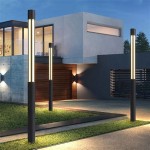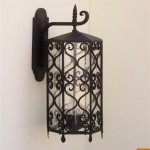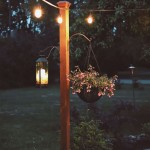Outdoor Lighting Placement Guide: Essential Aspects for Optimal Illumination
Properly placed outdoor lighting enhances the aesthetics, safety, and functionality of your outdoor spaces. By carefully considering the placement of your fixtures, you can create a cohesive and inviting environment that welcomes guests and extends your living space into the night.
When planning your outdoor lighting layout, keep these essential aspects in mind:
1. Purpose and Function: The primary purpose of outdoor lighting is to ensure safety, provide illumination for specific activities, or create a decorative ambiance. Consider the intended use of each area and choose fixtures that serve that purpose effectively.
2. Layers of Lighting: Create a balanced lighting scheme by layering different types of fixtures. Ambient lighting provides general illumination for larger areas, while task lighting focuses on specific areas like seating or pathways. Accent lighting highlights architectural features or landscapes.
3. Height and Direction: The height and direction of your fixtures determine the spread and intensity of the light. Tall fixtures provide wider coverage, while shorter fixtures create more focused illumination. Uplighting highlights trees or architectural elements, while downlighting casts light on pathways or gathering spaces.
4. Spacing and Distribution: Ensure even distribution of light by spacing fixtures appropriately. For ambient lighting, use evenly spaced fixtures to avoid dark spots. For task lighting, place fixtures directly above or near the area you wish to illuminate. Accent lighting can be more sporadic to create focal points.
5. Shadows and Dark Zones: Avoid creating harsh shadows or overly dark areas. Use low-level fixtures to fill in shadows and provide a sense of depth. By eliminating dark zones, you enhance both visibility and safety.
6. Overlighting and Light Pollution: Avoid overlighting by using fixtures with appropriate wattage. Excessive lighting can create glare and disrupt the natural night sky. Consider low-wattage fixtures or dimmers to control light levels.
7. Aesthetics and Ambiance: Choose fixtures that complement the architectural style and landscape design of your home. Consider the size, shape, and color of fixtures to create a cohesive and visually appealing outdoor environment.
8. Safety and Security: Outdoor lighting plays a crucial role in deterring crime and ensuring safety. Place fixtures strategically to illuminate entry points, pathways, and dark corners. Motion-activated fixtures add an extra layer of security, activating automatically when movement is detected.
9. Energy Efficiency: Opt for energy-efficient fixtures such as LED lights or solar-powered options. LED fixtures consume less energy and have longer lifespans, reducing maintenance costs and environmental impact.
By incorporating these essential aspects into your outdoor lighting placement plan, you can create a well-lit, inviting, and secure outdoor environment that extends the enjoyment of your property well into the evening.

Outdoor Lighting Guide Delmarfans Com

Learn About Outdoor Lighting Placement Kichler

Outdoor Lighting Guide When Installing Two Lights On Either Side Of The Front Door H Farmhouse Fixtures

Outdoor Lighting Guide Delmarfans Com

Outdoor Lighting Guide Rating Sizing Placement Finish Style Modern Landscape Landscaping Design

A Guide To Exterior Lighting

Outdoor Lighting Guide Exterior Tips And Tricks

Where To Place Landscape Lighting Drost

Where To Place Landscape Lighting Tips

Guide To Home Improvements And Upgrades Exterior Lighting
Related Posts







